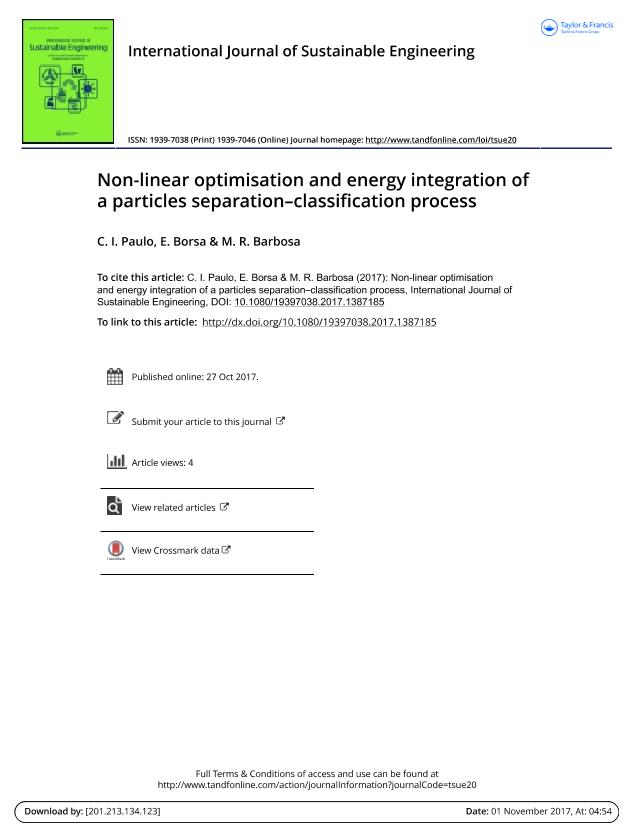Artículo
Non-linear optimisation and energy integration of a particles separation–classification process
Fecha de publicación:
10/2017
Editorial:
Taylor & Francis
Revista:
International Journal of Sustainable Engineering
ISSN:
1939-7038
e-ISSN:
1939-7046
Idioma:
Inglés
Tipo de recurso:
Artículo publicado
Clasificación temática:
Resumen
The gas–solid separation has several industrial applications in engineering process. The collection efficiency and the energy consumption are critical variables in particles separation process. In this study, a non-linear programming problem is proposed to maximise the cyclone efficiency in a 34,560.0 ton/year particles separation–classification plant. A new process integration scheme is proposed to energy consumption minimisation. The units included in the model are a powder feeder, a high efficiency cyclone, a bag filter and a blower. Stairmand and Swift’s high efficiency cyclones models are evaluated and compared. Four particulate materials are considered: limestone, dolomite, sawdust and toner. The particles diameters range studied is 0.1–1000 (Formula presented.)m. Mass and energy balances are solved with an initial solid concentration of 500 g/m(Formula presented.). Stairmand’s cyclone proved to be more efficient than Swift for all materials analysed. The highest cyclone efficiency is achieved for sawdust ((Formula presented.) 99%). The cyclone separates more than 34,000 ton/year of particles (Formula presented.)m. The energy integration scheme consumes 43% less energy than the basic one for all cases studied. The proposed optimisation model results a valuable tool for optimal process design, reducing the environment process impact and adaptable to operate at high temperatures values with different materials.
Archivos asociados
Licencia
Identificadores
Colecciones
Articulos(CIFICEN)
Articulos de CENTRO DE INV. EN FISICA E INGENIERIA DEL CENTRO DE LA PCIA. DE BS. AS.
Articulos de CENTRO DE INV. EN FISICA E INGENIERIA DEL CENTRO DE LA PCIA. DE BS. AS.
Citación
Paulo, Cecilia Inés; Borsa, Eugenia; Barbosa, Mirta Raquel; Non-linear optimisation and energy integration of a particles separation–classification process; Taylor & Francis; International Journal of Sustainable Engineering; 10-2017; 1-10
Compartir
Altmétricas




